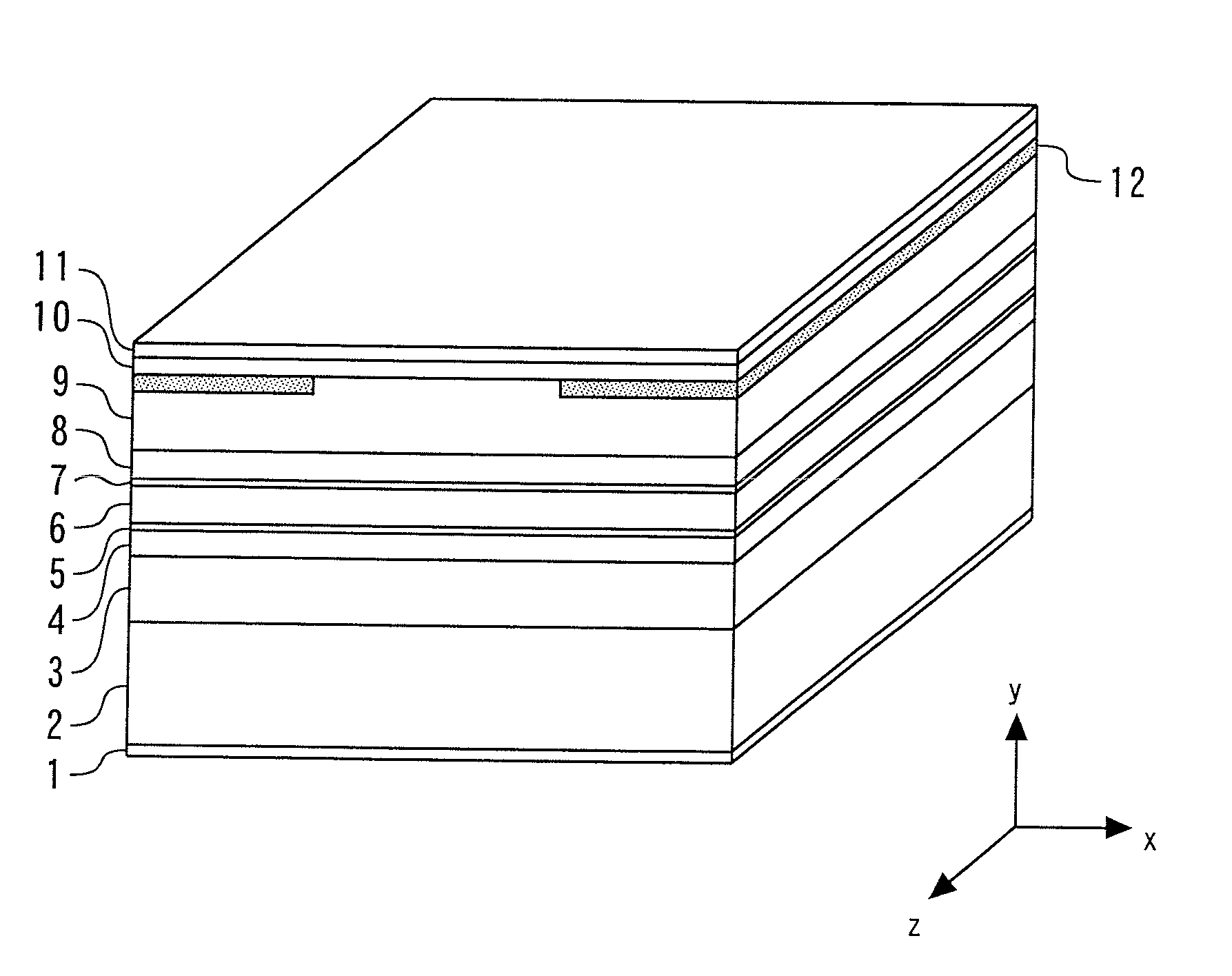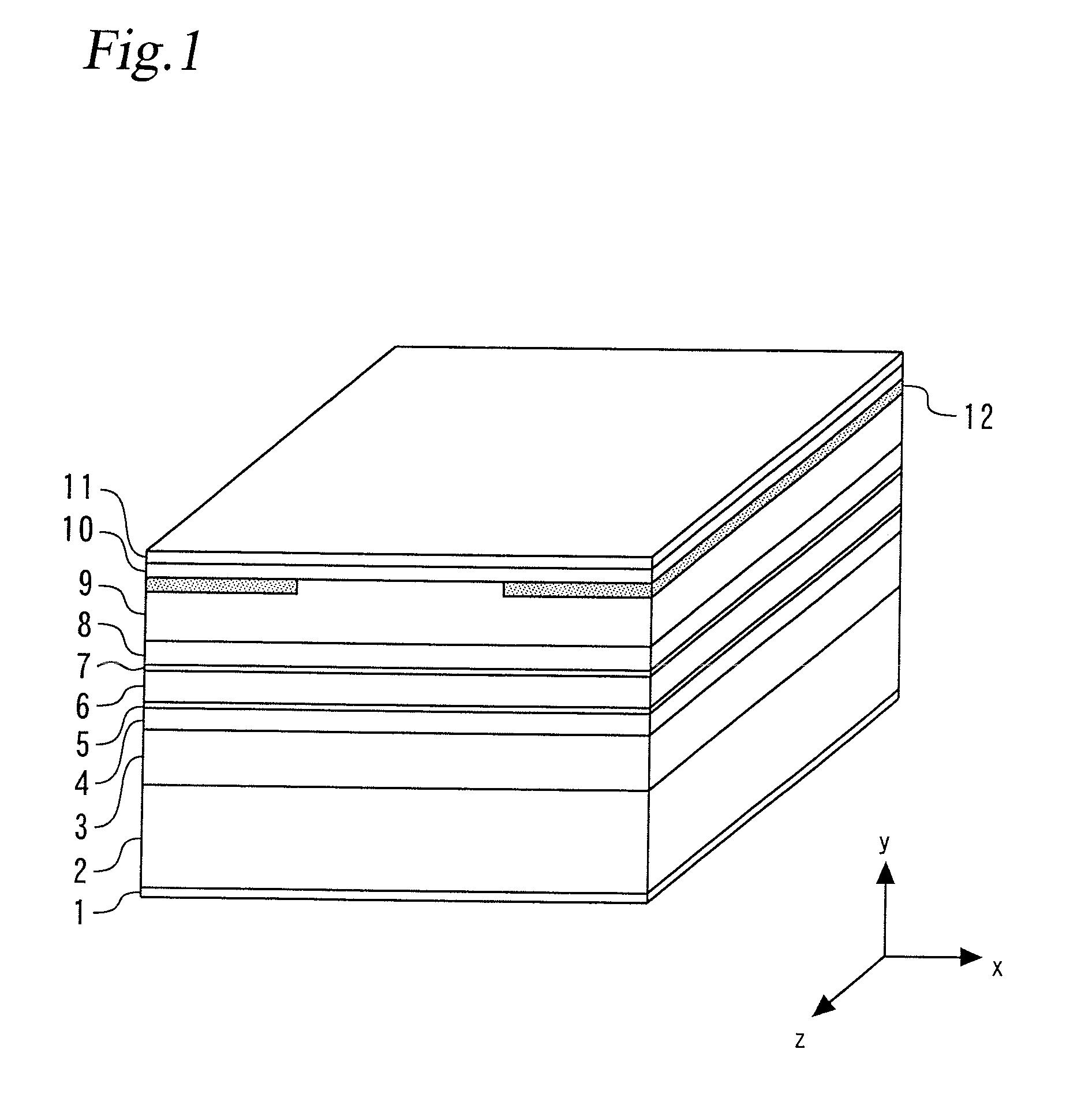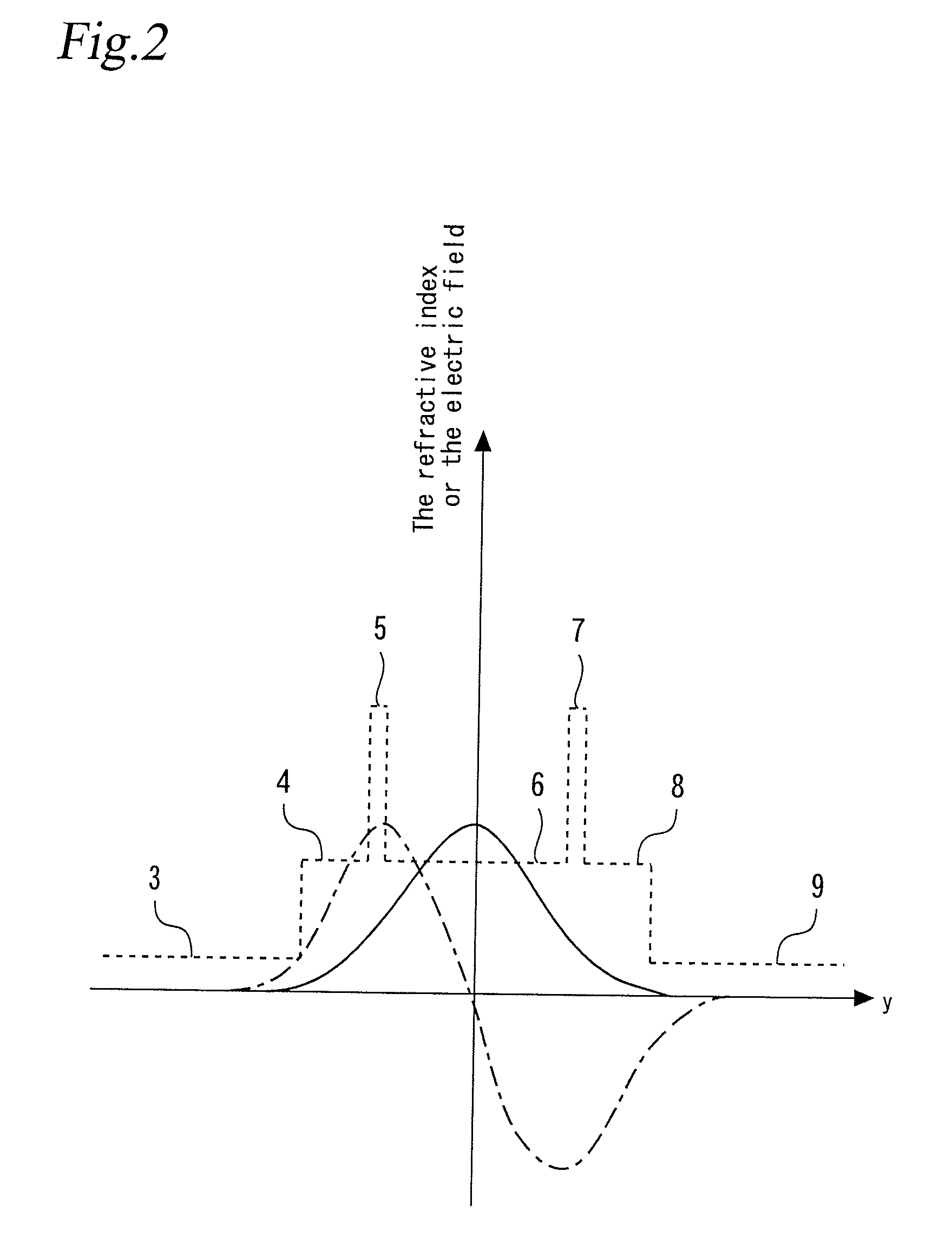Semiconductor laser device
- Summary
- Abstract
- Description
- Claims
- Application Information
AI Technical Summary
Benefits of technology
Problems solved by technology
Method used
Image
Examples
first embodiment
[0021]FIG. 3 is a perspective view of an 810 nm semiconductor laser device according to the first embodiment of the present invention. This semiconductor laser device is configured to lase in modes up to the second order mode, inclusive, and includes three active layers, which are disposed near the locations of extreme points of the electric field of the second order mode.
[Configuration of First Embodiment]
[0022]The configuration of the semiconductor laser device of the present embodiment will be first described with reference to FIG. 3. In FIG. 3, reference numeral 13 denotes an n-side In0.49Ga0.51P guiding layer with a thickness of 100 nm; 14, a GaAs1-xPy active layer with a thickness of 10 nm (where y=0.12); 15, an In0.49Ga0.51P barrier layer with a thickness of 500 nm; 16, a GaAs1-yPy active layer with a thickness of 10 nm (where y=0.12); 17, an In0.49Ga0.51P barrier layer with a thickness of 500 nm; 18, a GaAs1-yPy active layer with a thickness of 10 nm (where y=0.12); and 19, ...
second embodiment
[0028]A second embodiment of the present invention, like the first embodiment, relates to a semiconductor laser device configured to be able to lase in modes up to the second order mode, inclusive. However, this semiconductor laser device differs from that of the first embodiment in the number and the positions of the active layers. More specifically, the semiconductor laser device of the present embodiment includes only two active layers, while that of the first embodiment includes three active layers. In the present embodiment the active layers are respectively disposed near the locations of two extreme points of the electric field of the first order mode, while in the first embodiment the active layers are disposed near the locations of extreme points of the electric field of the second order mode.
[Configuration of Second Embodiment]
[0029]The configuration of the semiconductor laser device of the present embodiment will be first described with reference to FIG. 5. FIG. 5 is a per...
PUM
 Login to View More
Login to View More Abstract
Description
Claims
Application Information
 Login to View More
Login to View More - R&D
- Intellectual Property
- Life Sciences
- Materials
- Tech Scout
- Unparalleled Data Quality
- Higher Quality Content
- 60% Fewer Hallucinations
Browse by: Latest US Patents, China's latest patents, Technical Efficacy Thesaurus, Application Domain, Technology Topic, Popular Technical Reports.
© 2025 PatSnap. All rights reserved.Legal|Privacy policy|Modern Slavery Act Transparency Statement|Sitemap|About US| Contact US: help@patsnap.com



